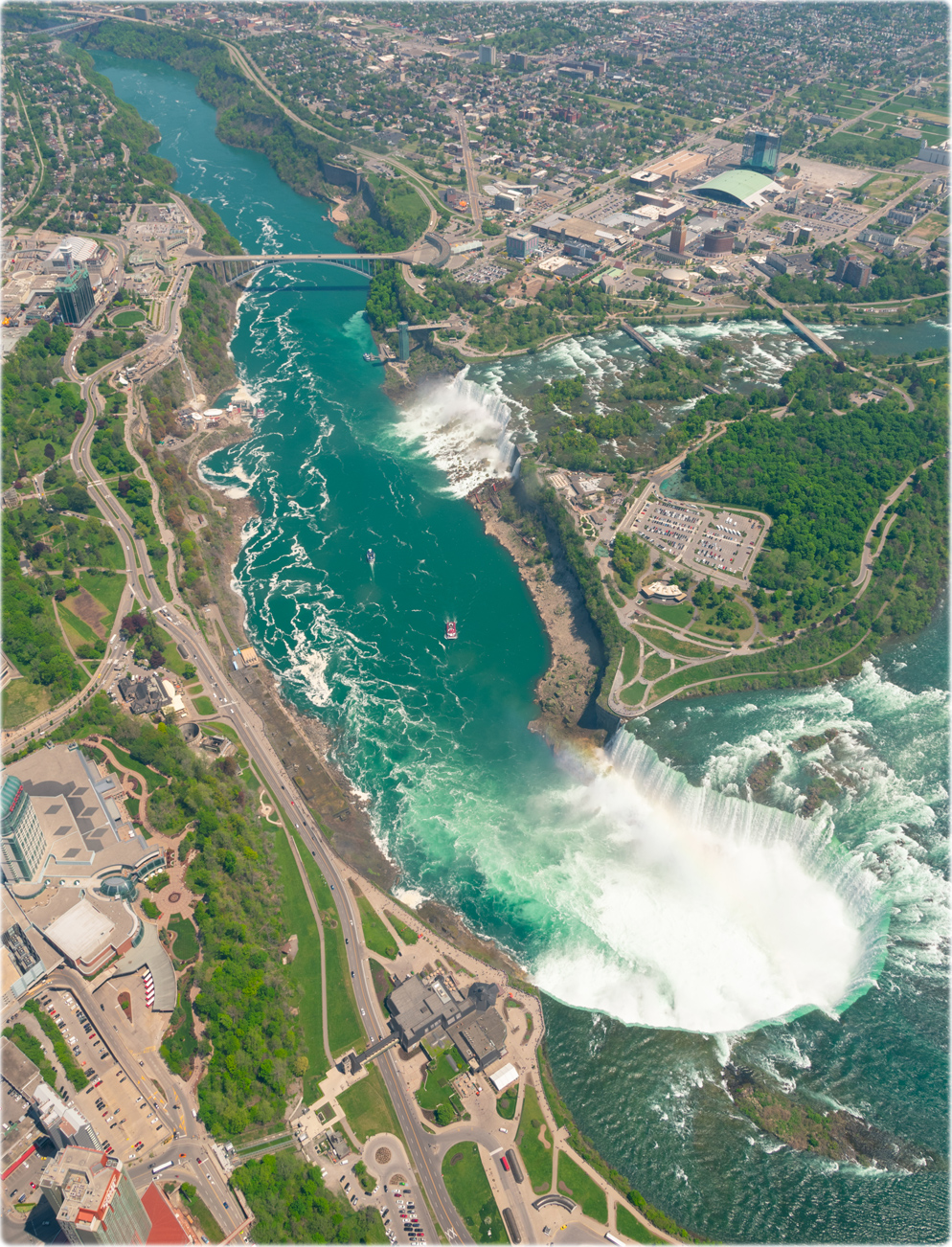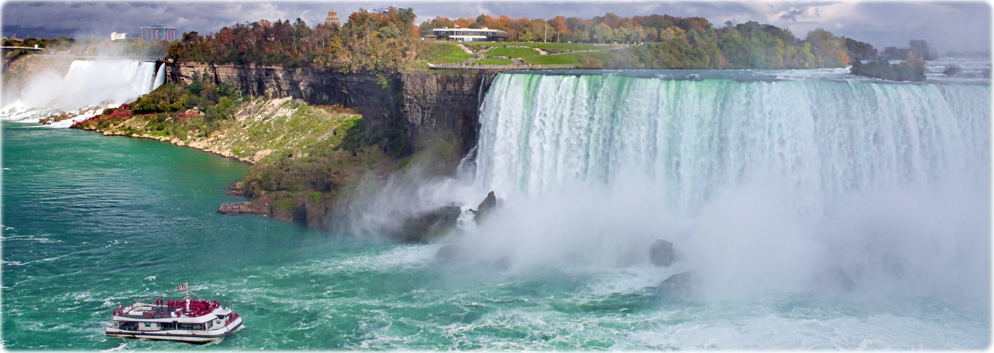
Niagara Falls
Niagara Falls is one of North America's top tourist attractions. They are a group of three waterfalls at the Niagara Gorge, in the border between the province of Ontario, in Canada, and the state of New York, in the United States. The largest waterfall is the Horseshoe Falls (Canadian Falls), which is on the international border of the two countries. The smaller American Falls and Bridal Veil Falls are located within the United States. Bridal Veil Falls is separated from Horseshoe Falls by Goat Island and from American Falls by Luna Island, both islands in New York State.
The Niagara Region was a place of awe and wonder for the Indigenous peoples who first walked this area. Their ancestors’ footsteps arrived approximately 13,000 years ago as the melting glaciers retreated northward, revealing the great lakes of Erie and Ontario and the Niagara River that connects both lakes.


Aerial view of Niagara River and its falls. Canada is on the left (photo Niagara Falls Tourism).
|
Copyright © Geographic Guide - Maps World, American Continent. |
Niagara Falls

WildPlay's Zipline to the Falls (source: Niagara Falls Tourism).
Niagara City Cruises. The Horseshoe Falls is on the right.
One of the earliest indigenous inhabitants, in the region, called themselves the “Onguiaahra”. It is one of the names from which the name “Niagara River” originated. The name appears on maps as early as 1641. Early maps do not refer to the Niagara River but the Niagara Strait, which is more correct. Others believe the word Niagara is taken from another indigenous word meaning, “Thundering Waters”. Another theory of the name's origin suggests Niagara is derived from the name given to a local group of Indigenous peoples, called the Niagagarega people (source: Niagara Falls Tourism).
Niagara Fallsview Casino Resort at night and the Skylon Tower on the right, in the Canadian side (photo Niagara Falls Tourism).
New York
Winter in Niagara Falls (source: Niagara Falls Tourism).



Horseshoe Falls
Ontario